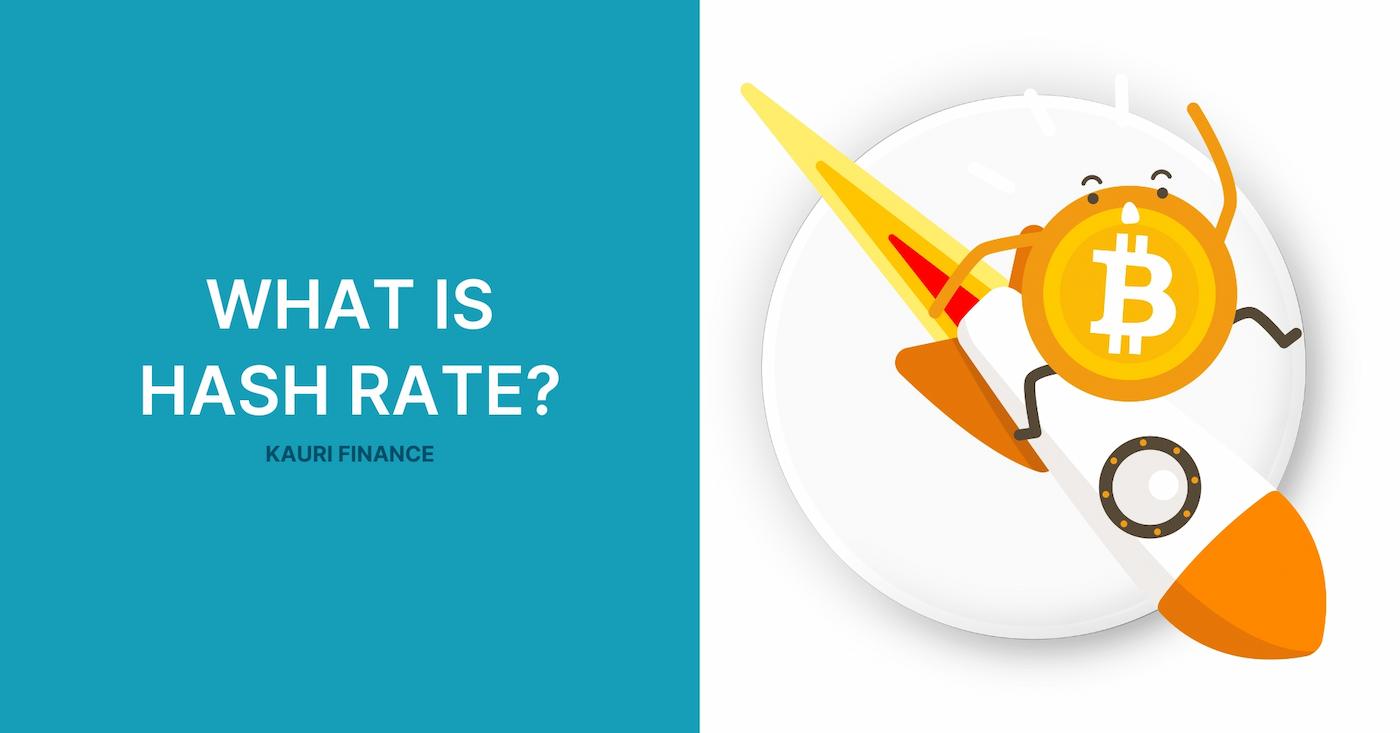
What is Hash rate?

Hashrate is a key measure of processing power in Proof-of-Work (PoW)-based blockchain networks. It reflects the total number of hashing operations performed per second across the network and serves as a measure of the complexity of mining and the security level of the network.
Each attempt to solve a cryptographic problem and find a new block in the blockchain represents a hash guess. The hash rate directly affects the chances of a miner or mining pool successfully solving the problem first and being rewarded with a block.
A higher hash rate not only increases the security of the network, making attacks like 51% less likely, but also increases the complexity of mining, requiring more processing power for miners to find a new block. Thus, hash rate is directly related to two major aspects of blockchain networks: security and scalability.
Understanding Hashrate
Hashrate is a critical element for blockchain networks that run on a Proof-of-Work (PoW) algorithm, such as Bitcoin. In these networks, miners compete with each other in cryptographic tasks to add a new block to the blockchain and get rewarded for doing so.
- The process of generating hashes: it involves converting input data of any size into a short fixed string using a hash function. This string represents the "hash" of the block. In PoW blockchains, miners generate many such hashes in an attempt to find one that matches certain network conditions (e.g., starts with a certain number of zeros). This process requires significant computing power and energy.
- Hash rate: is measured in hashes per second (H/s) and its derivatives: kiloHash/s (KH/s), megaHash/s (MH/s), gigaHash/s (GH/s), terahash/s (TH/s) and even higher. The higher the hash rate of a device or network, the more hash functions it can perform per second, which increases the chances of successfully finding a new block.
- The importance of hash rate to the blockchain: is to ensure the security and stability of the network. A high overall network hashrate makes it more difficult to carry out attacks such as the 51% attack, where an attacker can attempt to control a large portion of the network's hashrate to manipulate transactions or double-spend. Thus, hashrate serves not only as a measure of a network's processing power, but also as a measure of its security.
Hashrate Measurement
Hashrate measurement is a key factor in evaluating the performance and security of Proof-of-Work networks. It indicates the number of hash operations that a mining device or the entire network can perform in one second.
Units of hash rate measurement:
- KiloHash/s (KH/s) -a thousand hashes per second. This is the smallest unit of hash rate and is rarely used in modern blockchains due to their high computing power requirements.
- MegaHash/s (MH/s) -a million hashes per second. Often used to estimate the performance of home mining rigs.
- GigaHash/s (GH/s) -billion hashes per second. This hash rate level is typical for professional mining devices and small mining farms.
- Terahash/s (TH/s) -a trillion hashes per second. Mining devices and pools operating at this level contribute significantly to the total hash rate of large cryptocurrency networks.
- Petahesh/s (PH/s), Exahesh/s (EH/s), and further - these hashrate scales are used to describe the performance of the largest mining pools and entire blockchain networks such as Bitcoin.
Impact on mining complexity:
The complexity of mining is directly related to the overall hash rate of the network. As the hash rate increases, in order to maintain a stable block generation time (for example, every 10 minutes for Bitcoin), the network algorithm automatically increases the complexity of the problem that miners must solve to find a new block. This provides a balance between the number of participants in mining and the possibility for each of them to be rewarded.
On the other hand, if the hash rate of the network drops, for example, due to the shutdown of a significant number of miners, the algorithm will automatically reduce the complexity of mining to ensure that the block generation time remains stable. This ensures that the blockchain remains functional and accessible even if some computing power is lost.
Importance of Hashrate
Hashrate plays a key role in the security and stability of Proof-of-Work (PoW) blockchain networks. Here are the main reasons why hashrate is considered a critical parameter:
Network security:
- A high hash rate: means more computing resources are involved in the mining process. This creates an additional obstacle for potential attackers looking to conduct a 51% attack, as this would require control over a larger portion of the network's processing power.
- Resilience to attack: The higher the hash rate, the more distributed and decentralized the network is. This reduces the likelihood of a successful attack on the network, as it will be necessary to coordinate the actions of multiple miners, which is virtually impossible.
Mining complexity:
- Dynamic difficulty adjustment: Blockchain networks automatically adjust the difficulty of mining depending on the overall hashrate. An increase in hashrate leads to an increase in complexity, which keeps the time to find a block stable, such as 10 minutes for Bitcoin.
- Impact on mining profitability: As the difficulty of mining increases, the likelihood that an individual miner or small mining pool will be able to find the next block and be rewarded decreases. This incentivizes miners to increase and optimize their computing power or join large mining pools to increase the chances of success.
Thus, hash rate directly affects two key aspects of PoW blockchain networks -security and mining complexity. A high hash rate not only makes the network more secure from attacks, but also increases the computational resource requirements of miners, which ensures a more even distribution of rewards and supports network decentralization.
Hashrate Changes
Changes in the hashrate of a blockchain network can have a significant impact on its performance and security. Let's take a closer look:
Increasing hashrate:
- Increasing Security: When the hash rate of a network increases, it usually indicates an influx of new miners and an increase in overall computing power. This makes it harder for potential attackers to carry out a 51% attack, as it will require significantly more resources.
- Energy consumption: As the hash rate increases, so does the power consumption as more equipment is involved in the mining process. This can raise environmental and energy efficiency concerns.
- Mining complexity: As the hash rate increases, the network automatically adjusts the complexity of mining to maintain a constant block generation time. This can make mining less profitable for individual miners without sufficient processing power.
Declining hashrate:
- Reduced security: A decrease in hashrate indicates an exodus of miners from the network, which could make it easier to execute a 51% attack. A decrease in the number of participants engaged in mining reduces decentralization and increases the vulnerability of the network.
- Reduced power consumption: A decrease in hash rate can lead to a decrease in the overall power consumption of the network, which can be seen as a positive environmental effect. However, it could also indicate a decrease in interest in mining and potential problems in the economics of the network.
- Increased odds for miners: A decrease in the difficulty of mining due to lower hash rates may temporarily increase the probability of finding a block for remaining miners, increasing their profitability. However, it may also signal a decrease in the overall cost and attractiveness of mining on a given network.
Changes in hashrate reflect the dynamics of the blockchain network and can serve as an indicator of its health, stability and security. It is important to note that strong hashrate fluctuations can indicate network instability and will require attention from both miners and developers.
Kauri Finance
Kauri Finance is an innovative financial technology solution, offering users unique opportunities to manage cryptocurrency assets and participate in the blockchain ecosystem. With the use of cutting-edge technology and a commitment to maximizing transparency and security, Kauri Finance opens new horizons for cryptocurrency investors and enthusiasts.
Key aspects of Kauri Finance:
- Integration with blockchain networks: Kauri Finance simplifies the process of investing and trading cryptocurrencies by providing integration with leading blockchain platforms. This gives users access to a wide range of assets and the ability to participate in a variety of blockchain projects.
- Safety and Security: Kauri Finance attaches great importance to the security of users' funds and data. The use of advanced encryption technologies and multi-layered security systems provides strong protection against unauthorized access.
- Educational Resources:Kauri Finance is actively developing an educational program for its users, offering articles, webinars, and training courses on blockchain, cryptocurrencies, and investment strategies.
- Community Support:The platform strives to build a strong and active community by offering forums, social media groups to share experiences and discuss the latest trends in the world of blockchain and cryptocurrencies.
Summary
Hashrate is a key metric in the world of cryptocurrency mining, reflecting the processing power of a network that affects its security and efficiency. Understanding hash rate, its measurements and its impact on the mining process allows you to better navigate the technical aspects of blockchain technology.
Come to Kauri Academy for in-depth knowledge from the world of DeFi, blockchain, cryptocurrencies and other modern technologies that unlock the potential of decentralized finance and innovation in the digital economy.
